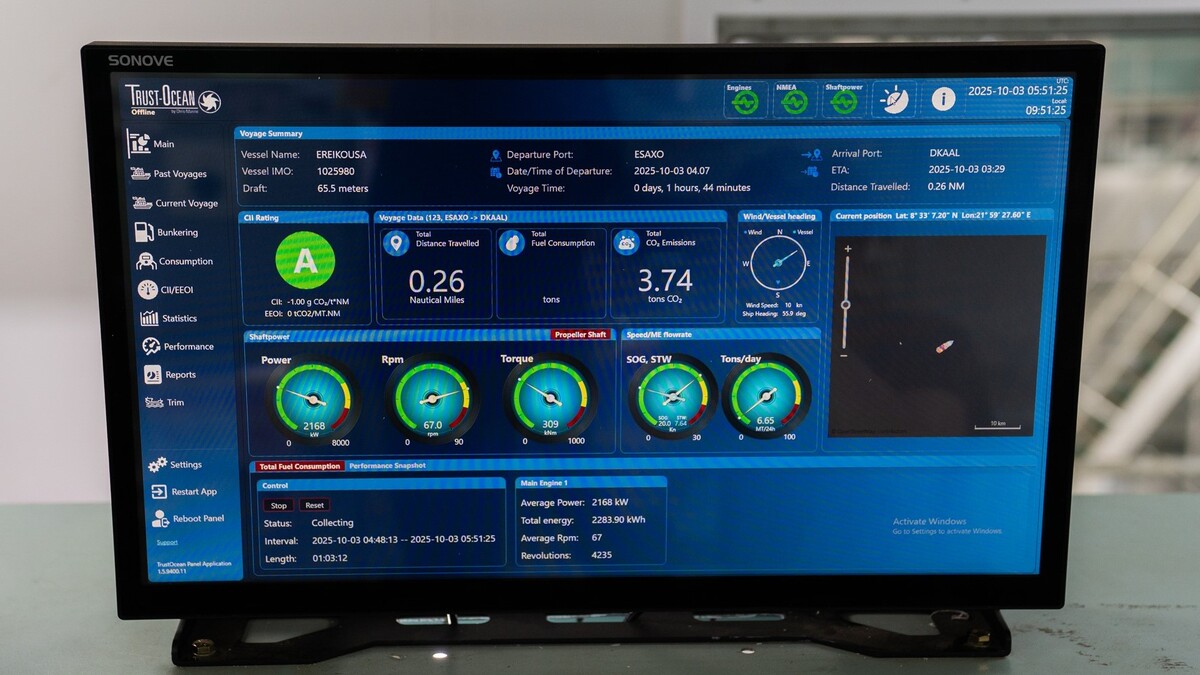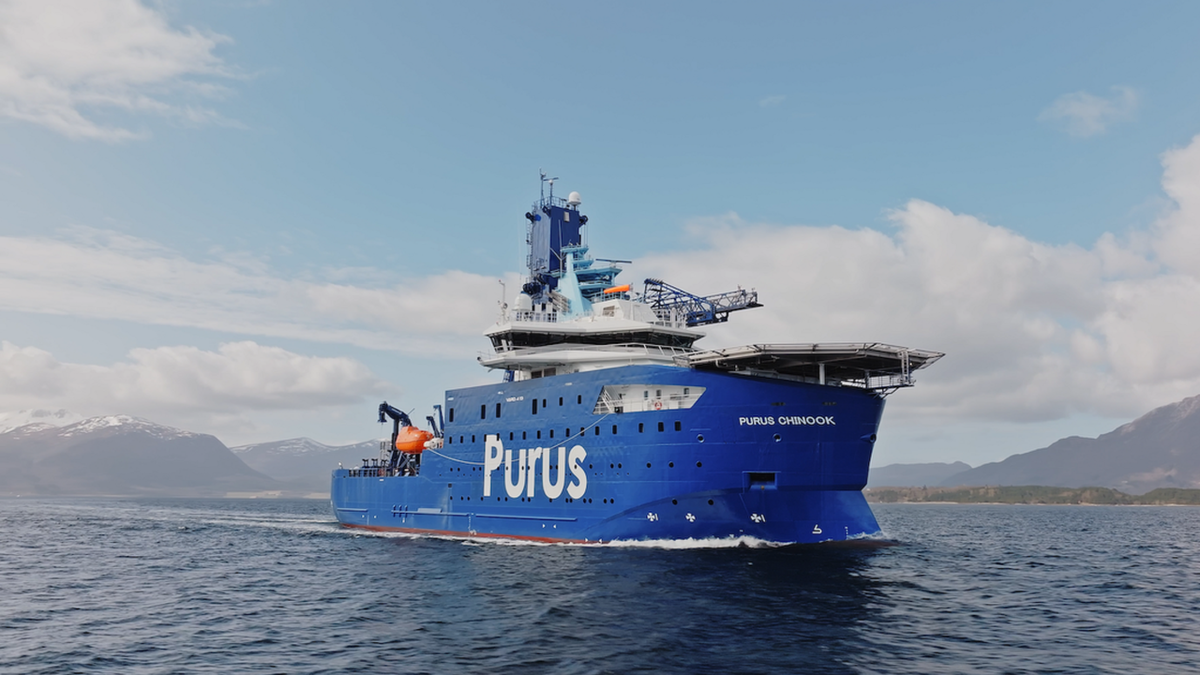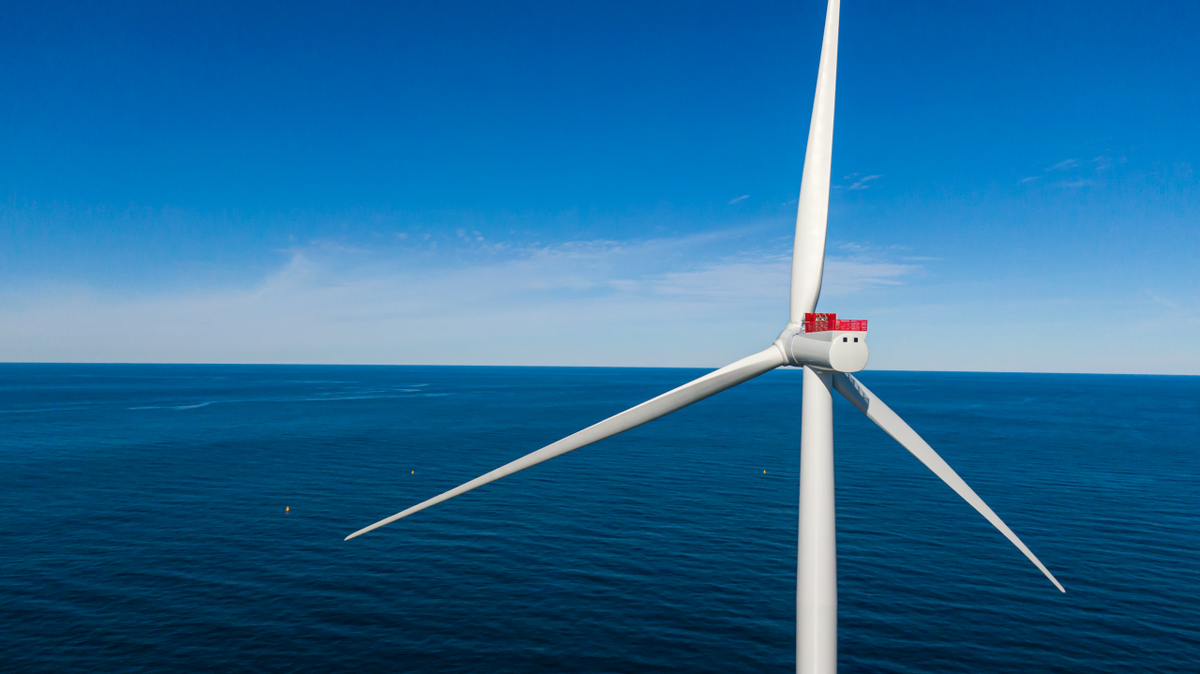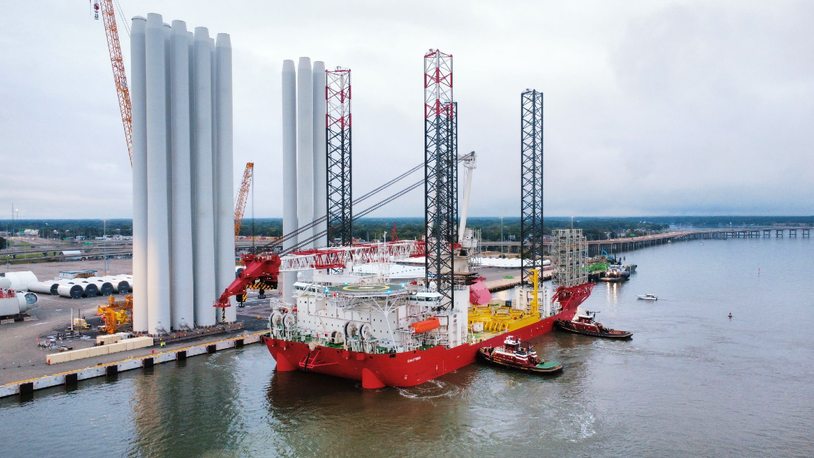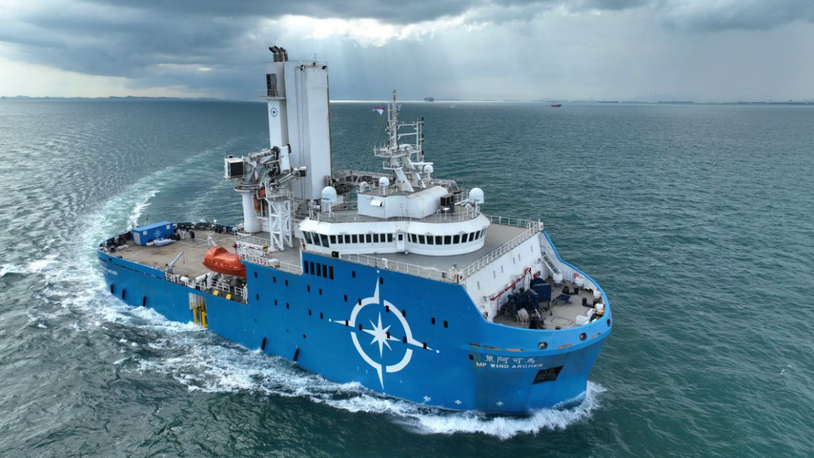Business Sectors
Events
Ship Recycling Webinar Week
Contents
Innovative suction bucket jacket foundation deployed
In August 2014, an innovative foundation that could help cut the cost of energy from offshore windfarms was successfully deployed by Dong Energy as part of its collaboration with the Carbon Trust Offshore Wind Accelerator (OWA) programme.
The full-scale trial of the suction bucket jacket foundation is being conducted at the Borkum Riffgrund 1 offshore windfarm, 37km off the northwest coat of Germany and is the culmination of work to overcome one of the key challenges that will be faced by offshore windfarms of the future.
As projects are built further from shore in deeper water, they will need to be installed without exceeding strict regulatory requirements on underwater noise. The innovative suction bucket design, developed by Dong Energy, has been tailor made specifically to tackle these challenges.
It consists of three legs welded together in a jacket structure standing on three giant suction buckets that anchor the foundation to the seabed. The lightweight structure can be installed in a single operation, reducing the time it takes to complete installation, so helping to reduce the costs of electricity from offshore wind. Dong Energy’s target is to drive down the cost of electricity by 35–40 per cent for offshore windfarm projects sanctioned in 2020.
Borkum Riffgrund 1 was selected for testing the foundation due to its sandy seabed, which makes the installation a challenge and provides a more solid case for the evaluation of the concept. A 3.6 megawatt (MW) turbine from Siemens Wind Power will be installed on top of the foundation in October this year.
Tove Feld, vice president of Dong Energy, described the installation of the first ever suction bucket jacket foundation as “a great day”. Tom Delay, chief executive of the Carbon Trust, said he believed that innovative foundation designs, such as the suction jacket technology, will play an important role in efforts to cut the cost of energy from offshore wind.
“This foundation has been designed for serial fabrication and will save costs across design, fabrication and installation through to operation. Full-scale demonstrations are the last critical step before a new innovative design can be considered for commercial projects. We are very enthusiastic about this design and the impact it will have on the industry.”
The suction bucket jacket is equipped with a comprehensive monitoring system providing data. The OWA project partners, E.ON, Mainstream Renewable Power, Iberdrola/Scottish Power Renewables, Statkraft and Statoil, will have full insight into this data and also have full access to the fabrication and installation of the new foundation design. This will allow them to evaluate whether it should be used in the UK.
The suction bucket jacket has a total height of 57m and weighs approximately 850 tonnes. Each suction bucket has a diameter of 8m and a total height of 8m. The foundation is suitable for use in water ranging in depth from 30m to 60m. Another of its advantages is that it can be transported and installed in a single lift.
Separately, the OWA continues to work with Statoil, Statkraft, E.ON, Dong Energy and Universal Foundation, in close co-operation with Aalborg University, to undertake installation trials of the Universal Foundation suction bucket foundation. The OWA says it believes that foundation designs such as that from Universal Foundation have the potential to reduce the capital costs of offshore wind energy by up to £1 billion over the next decade and reduce the cost of energy from offshore windfarms by 10 per cent.
The £6.5 million joint industry trial is due to be executed in the third quarter of 2014 and will see installation of the Universal Foundation suction bucket together with a reference bucket at a number of different locations at the sites of three planned major offshore windfarms in the North Sea. The foundations will be installed at each site, then withdrawn and moved onto the next site for testing.
The Carbon Trust has estimated that new lower cost foundations could save developers up to £1 billion on the basis of new foundation designs driving a 10 per cent reduction in the cost of energy from 2,500 offshore wind turbines expected to be deployed over the next decade. Commenting on the trial, Jan Matthiesen, director of the OWA, said the suction bucket was “a really great innovation as you can install it faster and at lower costs than conventional steel foundations.
“That is good for developers and for consumers as it means it brings down the cost of offshore wind energy,” he said, noting that the trial would help determine the extent to which it can be applied for future offshore wind projects. Jan-Fredrik Stadaas, technology manager for offshore wind at Statoil, said the project was an important one for the industry project. He said it was an important piece of “de-risking activity”, moving technology further and securing future cost reductions.
Universal Foundation has teamed up with Fred Olsen Windcarrier to undertake the trials at sites with differing soil conditions in order to determine the potential range of use for the new foundation, which is expected to be significantly quicker to install and requires less steel than conventional monopile foundations.
Universal Foundation’s suction bucket was one of four novel low cost foundation designs that were shortlisted following an international competition run by the Carbon Trust in 2009. Two Universal Foundation suction buckets have already been installed at Dogger Bank, a Round 3 offshore wind site, where they support two meteorological masts. In addition, an offshore met mast foundation was installed in Denmark in 2009, and a 3MW turbine on a Universal Foundation has been fully operational in Frederikshavn since 2002.
Torgeir Ramstad, managing director of Fred Olsen United, of which Universal Foundation is a part, said, “Not only are we able to install in a wide range of soil conditions, carrying the largest turbines in deeper waters, we can accomplish installation of turbines immediately following foundation installation thus entering the production phase much faster. These are just a few of the key benefits of our value proposition.” As highlighted previously in OWJ, the suction bucket foundation has a number of other advantages, not least that the installation process does not require the use of jack-up vessels, there is no requirement for seabed preparation or the use of divers and there is no need for a separate transition piece, eliminating the need for a grouted connection. The suction bucket also needs less scour protection (or no protection at all, depending on location and seabed conditions), and the suction operation can be reversed, allowing complete removal of the foundation and its reuse.
The suction bucket foundations are far from being the only type of new foundations that are being designed, built and tested, however.
As highlighted in the second-quarter 2014 issue of OWJ, later this year, the first example of another innovative foundation design is expected to be installed, the first ‘base plate’ for Seatower’s crane-free foundation having recently been cast in France.
The foundation is due to be installed approximately 17km offshore from Fécamp in France in a water depth of 27m. Seatower is working with MT Højgaard in Denmark and Eiffage TP in France on the project on the Parc éolien en mer de Fécamp on behalf of French energy company EDF Energies Nouvelles, Dong Energy and wpd Offshore in Germany.
The base plate for the prototype foundation is slightly in excess of 23m in diameter and approximately 1m high. Once ballasted and fitted with the met mast it will carry, it will weigh 1,760 tonnes. The foundation will be lowered to the seabed having first been ballasted with seawater, the seabed having been prepared in advance, so that the foundation will be self-levelling. The new type of concrete gravity foundation was primarily designed for locations where the seabed conditions make driving a monopile impossible, but it is also suitable for use in deep water. It is also designed to be inexpensive and easy to install, being towed into location using tugs, without the need for large installation vessels. This means that several foundations can be installed in parallel in a relatively short weather window. Like the suction bucket foundations described above, the crane-free foundation is also more environmentally friendly because it does not require the use of piling. The structure is a hybrid one, made from concrete and steel, and can be mass produced efficiently.
Usually, foundations and towers for offshore wind turbines mounted on monopiles are connected by means of a transition piece, but a new approach is being pioneered on the Luchterduinen offshore windfarm in The Netherlands. Luchterduinen will be one of the first windfarms without separate transition pieces and instead will make use of foundations into which the transition piece is already integrated. This will reduce material costs and reduce the time it takes to install the turbine.
The key element of the design, conceived by the main contractor for Eneco’s Luchterduinen windfarm, Van Oord, is the greater height of the foundation piles, which will extend 17m above sea level rather than approximately 4m, as has been the case previously. The main innovation in the design is the fact that the flange connection between the turbine and the foundation pile can sustain the impact of the pile driver. Components such as the ladders and the platform will be connected to the pile offshore, after completion of the pile-driving process. This eliminates the need to design mounting structures for components such as these that could withstand the substantial forces imparted by a pile driver.
The foundations are being built by Sif Group in Roermond. Smulders Projects in Antwerp will then weld the mounting structures onto the piles. Van Oord was due to begin installing the foundations in July.
TAG foundations bound for Humber Gateway
TAG Energy Solutions achieved a significant landmark in its project to produce foundations for the Humber Gateway offshore windfarm recently when the company undertook the load out and sailaway of four 60m long, 650 tonne monopile foundations and four transition pieces destined for the windfarm, which is 8km off the Yorkshire coast close to the mouth of the Humber Estuary. The foundations are part of a project to deliver 16 monopiles and transition pieces for the Humber Gateway development. The remaining 12 foundations were due to sail away from TAG Energy Solutions’ site on the River Tees by the end of August.
The first set of monopiles was loaded onto a barge by a self-propelled modular transporter (SPMT) with the transition pieces lifted by crane onto the barge at TAG Energy Solutions’ wet dock facility. The barge was then taken down the River Tees where the turbines were loaded onto the turbine installation vessel MPI Discovery. The contract to build the foundations made TAG Energy Solutions the first UK manufacturer to secure a substantial monopile and transition piece project for a windfarm in British waters. OWJ
Related to this Story
Events
Ship Recycling Webinar Week
International Bulk Shipping Conference 2025
Tankers 2030 Conference
Maritime Navigation Innovation Webinar Week
© 2024 Riviera Maritime Media Ltd.

